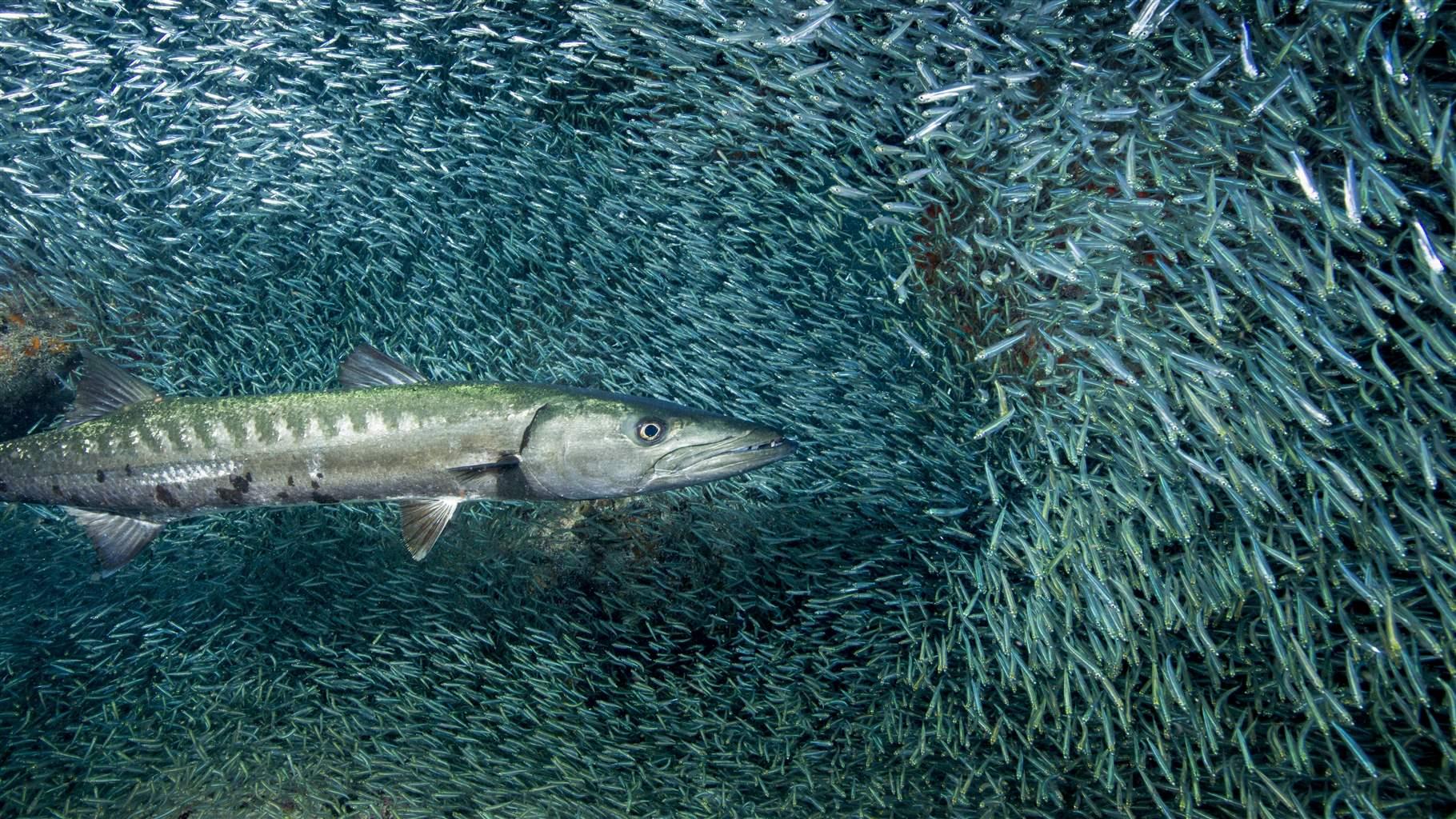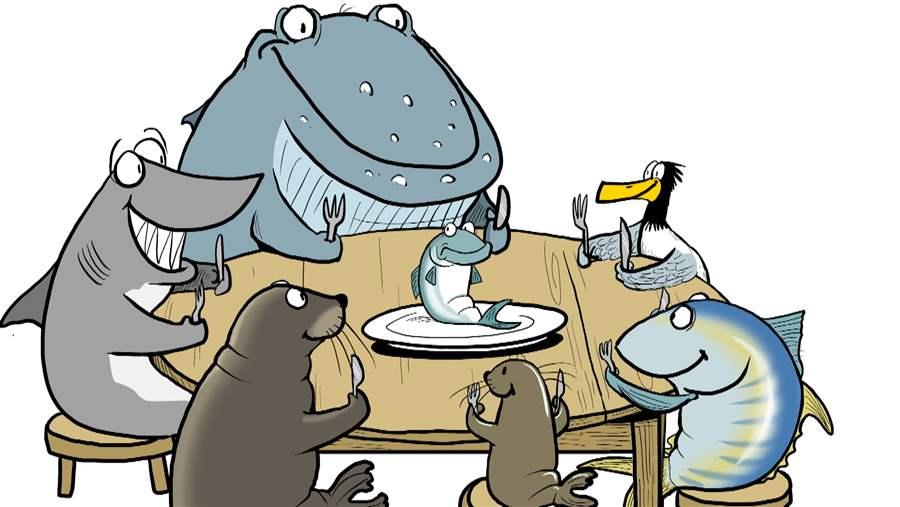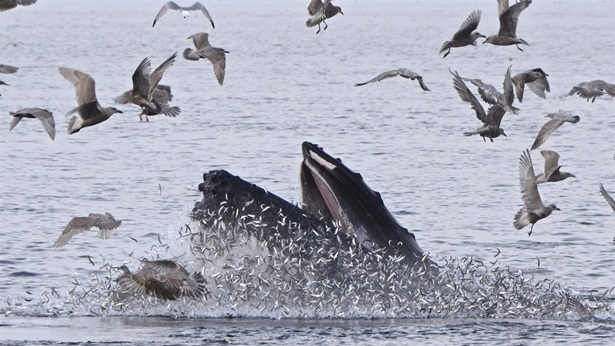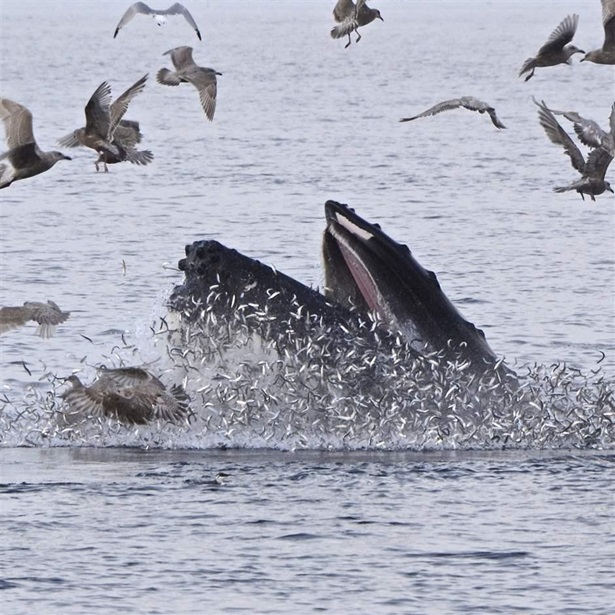Forage Fish That Fuel the Ocean Food Web Need More Than Patchwork Policies
Congress should support new bill to increase health of marine ecosystems

Here in Washington, on stretches of the Potomac River minutes from the halls of Congress, anglers have recently wrapped up a highly anticipated annual ritual: fishing for shad, which run up the river from coastal waters every spring. Enthusiasts of every age experience the anticipation of what could come: that moment when technique and luck merge into a bite on the line.
Fishing for shad is also a reminder that rivers like the Potomac connect to the ocean, where these fish spend most of their lives. Like anchovies, sardines, herring, alewives, and mackerel, shad are forage fish—those relatively small fish that school in large numbers in the ocean and form a major link in the marine food web.
Forage fish are the primary prey for a wide range of predators, including tunas, billfish, dolphins, whales, ospreys, eagles, striped bass, and salmon, all of which contribute to healthy ecosystems that coastal communities rely on to build and maintain their economies. Without forage fish, these communities stand to lose substantial revenue from recreational and commercial fishing, seafood sales, wildlife viewing, and other industries.
But the health of U.S. forage fish populations is in jeopardy. The nation’s primary ocean fishing law, the Magnuson-Stevens Fishery Conservation and Management Act, does not require fishery managers to conserve forage fish in a way that takes into account their role as prey for other fish and wildlife in the ocean. That means the food needs for bigger fish, whales, seabirds, and other predators are not always considered when forage fish catch limits are set.
The problems for forage fish include overfishing, which is driving some key forage species to historic lows. Other forage species are swept up at sea in large numbers by industrial fishing fleets aiming for different fish. Scientists have recently reported significantly low population levels for sardines off the West Coast, herring off New England, and mackerel off the Mid-Atlantic coast. Some of the chief predators of these fish, including commercially and recreationally valuable species, are also in decline. The failure to manage forage fish appropriately has hurt species and marine and river ecosystems from Maine to Florida, California to Washington, and along the Gulf of Mexico.
Fortunately, there’s an effort afoot to help solve these problems. The Forage Fish Conservation Act (H.R. 2236), a bipartisan bill introduced in the House of Representatives in April, would fix the shortcoming in the Magnuson-Stevens law by requiring science-based catch limits that account for the needs of predators to be applied to all currently managed forage fish species. For those species not currently managed, the bill would limit commercial fishing until managers assess the impact of a new fishery on the marine environment and on other fisheries. These provisions would ensure that predators have enough food to survive and reproduce—and would help ensure a sustainable ecosystem.
The bill also makes clear that valuable and depleted river herring and shad—species that spawn in rivers but spend considerable time at sea—should be managed under the Magnuson-Stevens Act. These species school with Atlantic mackerel and Atlantic herring, both of which are pursued by industrial-scale fishing vessels and caught by the millions. Many Atlantic Coast states understand the value of river herring and shad to anglers and a fully functioning ecosystem, and have spent millions of dollars restoring river habitat, removing dams, improving water quality, and in some cases restricting or closing recreational seasons. Anglers and community members have volunteered countless hours to assist in these restoration actions.
While several fishery management councils—including those that oversee North Pacific, Pacific, and Mid-Atlantic ocean fishing—have proactively protected unmanaged forage species, others have not. But forage fish are far too important to leave exposed to patchwork policies. Now is the time for more House members to co-sponsor H.R. 2236 and for the Senate to craft a bipartisan companion bill and move toward approving and implementing this much-needed legislation. By passing the Forage Fish Conservation Act, Congress can help America’s coastal communities enjoy a healthy and sustainable future—and keep a lot of anglers happy in the process.
Tom Wathen is vice president for environment at The Pew Charitable Trusts, and works from the Washington, D.C. office of the Philadelphia-based organization. Nehl Horton is president of the International Game Fish Association, based in Dania Beach, Florida.
Originally published at The Hill on June 3, 2019.


This video is hosted by YouTube. In order to view it, you must consent to the use of “Marketing Cookies” by updating your preferences in the Cookie Settings link below. View on YouTube
This video is hosted by YouTube. In order to view it, you must consent to the use of “Marketing Cookies” by updating your preferences in the Cookie Settings link below. View on YouTube








